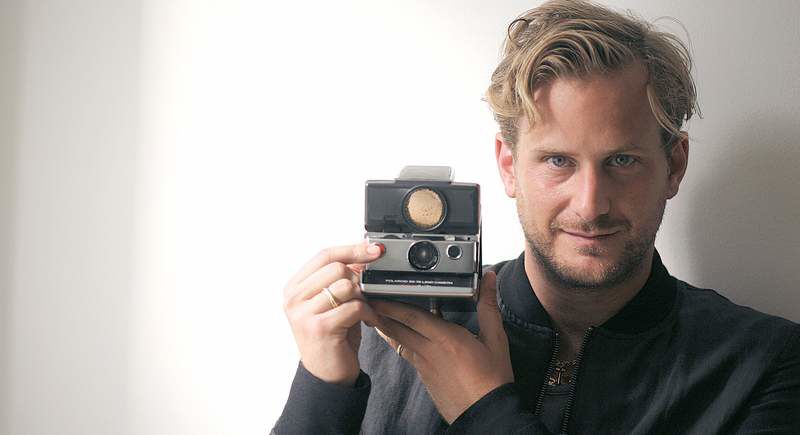Polaroid SX-70: A relic of the ’70s still inspires
Published 5:00 am Tuesday, September 13, 2011

- Clothing designer Robert Geller, with his Polaroid SX-70, which he uses to nurture his creativity, in New York. The 1972 camera model, which had become a dinosaur by 2008, the world having thoroughly converted to digital cameras, and Polaroid stopped making film for it.
The human mind deserves any number of admiring adjectives. But given its flair at misremembering the past, misjudging the present and misforecasting the future, “prescient” and “precise” are not among them.
This goes for everyone, not just political candidates. The menswear designer Robert Geller is the first to cop to it. When he was 9 or so, he came to New York with his family for the first time, from their home in Hamburg, Germany. They visited some weird “factory,” where they met a peculiar white-haired man who did portraits of him and his siblings. The boy was unimpressed.
“There was nothing to play with,” Geller, 35, said, chuckling. “But then we went off to FAO Schwarz, and all was forgiven.”
It was only when he was a teenager and becoming intrigued with fashion and art that he kicked himself for not appreciating the experience of having a portrait done by Andy Warhol.
He made up for lost time, though. Spending time in the Hamburg studio of his father, the photographer Wolfgang Peter Geller, Geller decided he would one day become a fashion photographer. To encourage him, his father gave him the first Hasselblad he had ever owned.
When it came time for higher education, he went off to the Rhode Island School of Design to study photography.
It was there that he began to realize that the kind of photography he was interested in was not a solitary pursuit. “You need hair and makeup people, models, stylists, assistants,” he said. “It’s always a production.” Having on a whim taken a class in fashion design, he discovered that, as social and public an art as fashion is, he could do the work how and when he pleased.
“I could get up at 5 a.m. and sketch for hours if I wanted to,” he said. “That time is beautiful.”
He dropped photography, picked up fashion and never looked back.
Not, at least, until 2001, after he had moved to New York. At a flea market, he came across a strange metal object encased in brown leather and asked what it was. The seller popped it open, thereby demonstrating one of the beguiling features of that shining symbol of the 1970s, the Polaroid SX-70 instant camera.
“I thought it was the coolest thing I’d ever seen,” said Geller, who promptly bought it. He started taking pictures of his new hometown (and his new girlfriend, Ana Lerario, whom he married in 2008) all on his own.
The SX-70, designed by Edwin Land and unveiled in October 1972, was the iPhone of its day. It packaged cutting-edge technology in a stylish slender design and became instantly desirable, selling 415,000 units in 1973.
By 2008, the world having thoroughly converted to digital cameras, the SX-70 had become a dinosaur, and Polaroid stopped making film for it.
Geller was crushed. He had never stopped using it. He even loves its drawbacks: its limited focal range, which tends to blur almost everything in its path, and the distinctive yet unpredictable color profile that can wash out features and details.
Lucky for him, a group of Polaroid employees and enthusiasts banded together and, calling themselves the Impossible Project, saved the plant and started making the film again last year. The SX-70 is saved.
“If you want clarity, this isn’t the camera,” Geller said. “This is more romantic. Like when you look at pictures from the ’70s, and they’re something beautiful even if not accurate.”
There are several apps for the iPhone that can make a digital picture resemble an old Polaroid, but Geller does not have one.
“That’s a fake,” he said. “It doesn’t do what the Polaroid does. This is a thing: It gives you something you can hold on to that you can’t change.”
And yet, he said, its infidelity is just as important.
“It’s not that I’m such a nostalgic person. I love the present. But your memory is selective.”
And it’s nice to have a friend that can be relied on not only to remember things the way you do, but also to have a stack of evidence at the ready.






